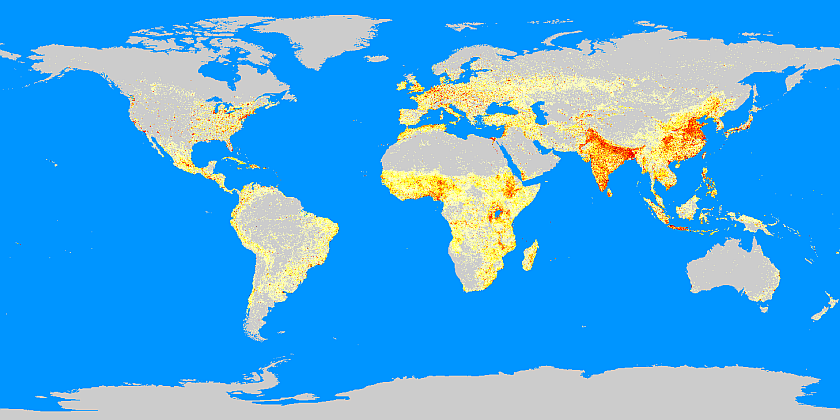landscan
Type of resources
Topics
INSPIRE themes
Keywords
Contact for the resource
Provided by
Years
Formats
Representation types
Update frequencies
status
Resolution
-

This dataset consists of the LandScan global population database of 2008 (grid in WGS84 with a 30" resolution) clipped to Europe and processed in order to match a LEAC grid (projection EPSG 3035 with a spatial resolution of 1km²). Content: population count per grid cell.
-

LandScan Global Population Database 2012. Population counts at 30 arc second resolution. Detailed information are to be found in cover_letter_ls12.pdf.
-

LandScan Global Population Database 2009. Population counts at 30 arc second resolution.
-

LandScan Global Population Database 2011. Population counts at 30 arc second resolution. Detailed information are to be found in cover_letter_ls11.pdf.
-

LandScan Global Population Database 2008. Population counts at 30 arc second resolution.
-

This dataset consists of the LandScan global population database of 2008 (grid in WGS84 with a 30" resolution) clipped to Europe together with the Mediterranean Basin, converted into a population density dataset and reprojected to EPSG:3035 (Lambert Azimuthal Equal Area 52N10E / ETRS89) with a spatial resolution of 1km². The methodology applied aimed at minimizing any discrepancy in population counts between the original data and the reprojected data at country level. Content: population count per grid cell. No data value: -99
-

Using an innovative approach with Geographic Information Systems and Remote Sensing, ORNL’s LandScan is the community standard for global population distribution. At 30 arc-second (approximately 1 km) resolution, LandScan is the finest resolution global population distribution data available and represents an “ambient population” (average over 24 hours). The LandScan algorithm, an R&D 100 Award Winner, uses spatial data and imagery analysis technologies and a multi-variable dasymetric modeling approach to disaggregate census counts within an administrative boundary. LandScan population data are spatially explicit - unlike tabular Census data. Since no single population distribution model can account for the differences in spatial data availability, quality, scale, and accuracy as well as the differences in cultural settlement practices, LandScan population distribution models are tailored to match the data conditions and geographical nature of each individual country and region. Purpose: LandScan Global was developed for the U.S. Department of Defense and is used for rapid consequence and risk assessment as well as emergency planning and management. Detailed information are to be found in cover_letter_ls13.pdf
 RUC Geo-Data catalogue
RUC Geo-Data catalogue